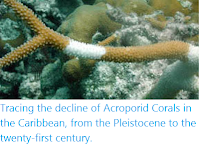A dust storm originating in the Sahara Desert has crossed the Atlantic Ocean and reached the Lesser Antilles Islands in the southern Caribbean this week. The Air Quality Index has exceeded 150, a level deemed to be Unhealthy by the Real-time Air Quality Index, in Tobago, Dominica, and on the north coast of Venezuela, due to high levels of fine particulates (particles with diameters of less than 2.5 μm), with other islands recording levels almost as high, and fears that changing wind directions could bring the dust to the Greater Antilles and southern United States.
A dust cloud over the Atlantic Ocean imaged by the GOES-17 Satellite on Monday 22 June 2020. NOAA/RAMMB.
The predominant weather system over North Africa is the Saharan Air
Layer, a hot, dry, and often dust-laden air system that prevents moister
air from the Atlantic and Mediterranean brining rain to the area. Over
the Atlantic this layer is typically forced up, above the moist, but
cooler, sea air, carrying dust westward to South America and the Caribbean. This brings with it dust particles that can have an immediate impact on health in the region, but which are also thought to contribute significanly to the soil fertility of tropical South America and the Caribbean Region, and which also help to suppress tropical storm formation at times of high dust transportation.
See also...
Follow Sciency Thoughts on Facebook.







